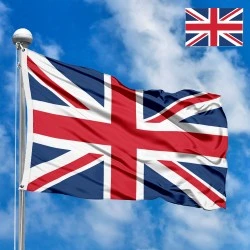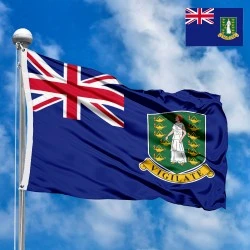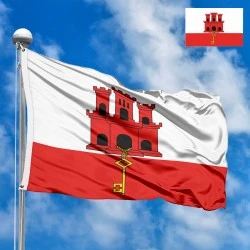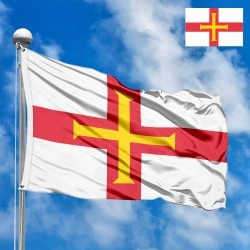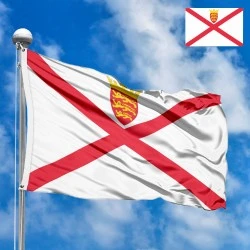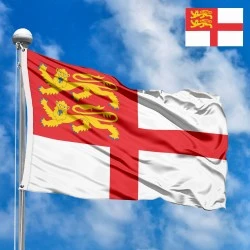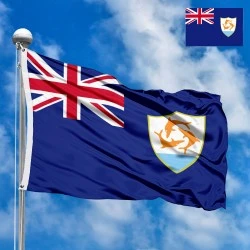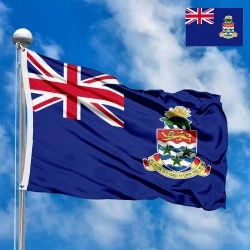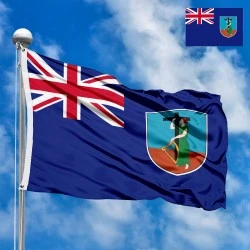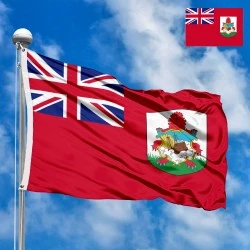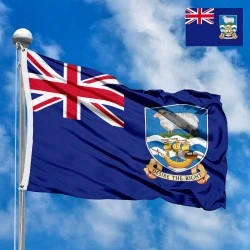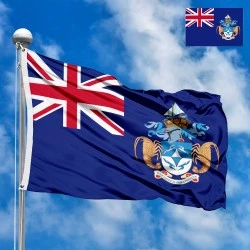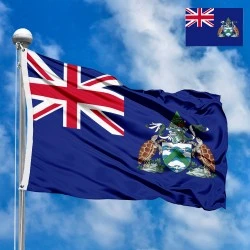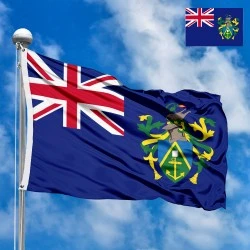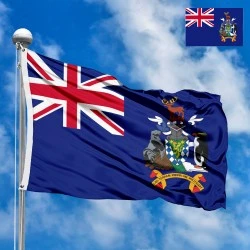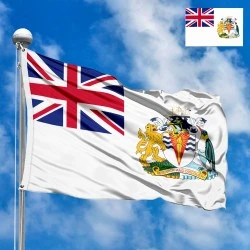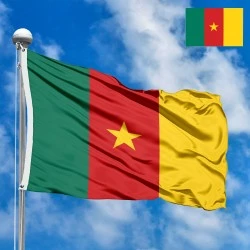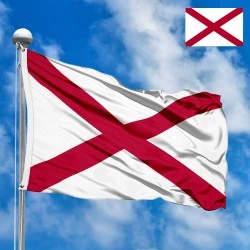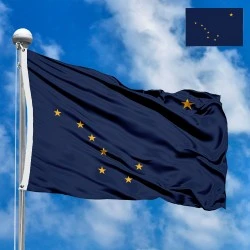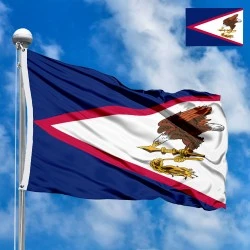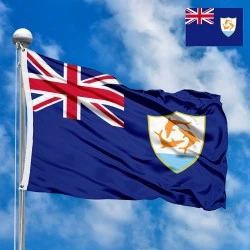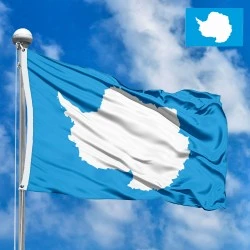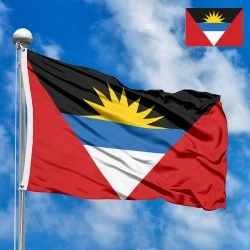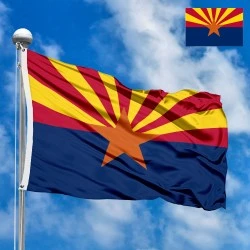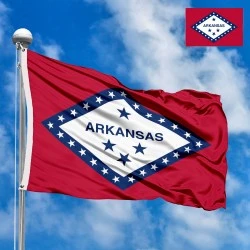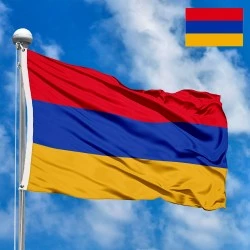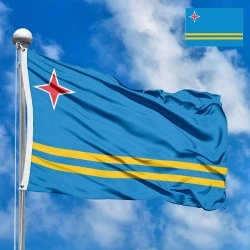Flag of Saint Helena
- Flag Type: Regional
- Proportions (official): 1:2
- Official name: Saint Helena
- Sovereignty (year): NO (British Overseas Territory)
- Country code, territory: SH, SHN, 654
- Capital: Jamestown
- Population: ~4,500 (2021, census)
- Religions: Christianity ~95%
- Area (km²): 122
- Highest point: Diana's Peak (818 m)
- Lowest point: Atlantic Ocean (0 m)
- Currency: Saint Helena pound (SHP, £)
- Languages: English
- Dialing code: +290
- National domain: .sh
Flag Information
General information
Demography and Culture
Economy and communications
- All Flags
- Flags of Countries by Continent
-
Flags of Organizations
- Flags of UN countries
- Flags of the European Union countries
- Flags of NATO countries
- Flags of the countries of the Organization of Islamic Cooperation
- Flags of the countries of the Organization of American States
- Flags of the Arab League countries
- Flags of the African Union countries
- Flags of the countries of the Union of South American Nations
- Flags of the Commonwealth of Nations
- Flags of the countries of the Secretariat of the Pacific Community
- Flags of the Nordic Council countries
- Flags of the Caribbean Community
- Flags of the countries of the Association of Southeast Asian Nations
- Flags of the East African Community
- Flags of the countries of the Organization of Turkic States
- LGBT Community Flags
- Historical Flags
- Ethnic Flags
- Flags of the USA (states)
Description
The Flag of Saint Helena is a captivating emblem that tells the story of one of the world's most historically significant and geographically isolated islands. As a British Overseas Territory in the South Atlantic, Saint Helena's flag is a powerful visual narrative, intertwining its British heritage with its unique natural environment, dramatic history, and the resilient spirit of its inhabitants. Far more than a mere symbol of governance, it represents the islanders' identity, their enduring connection to their remote home, and their pride in a heritage shaped by emperors, explorers, and the vast ocean.
Design and Dimensions
The Flag of Saint Helena is a classic Blue Ensign, a design traditionally used by many territories and organizations associated with the United Kingdom. Its composition is both elegant and symbolic: it features the Union Flag (the national flag of the United Kingdom) prominently in the canton (the upper hoist quarter), signifying its constitutional link to Britain. The most striking element, however, is the coat of arms of Saint Helena, which is boldly placed on the fly side (the half of the flag furthest from the flagpole).
-
Dimensions: Standard for British ensigns, the Flag of Saint Helena typically adheres to a proportion of 1:2 (height to width). This internationally recognized ratio ensures the flag's visual balance and allows its distinctive elements to be clearly displayed. The Union Flag within the canton also follows its established proportions, seamlessly integrating into the overall design.
Symbolism of the Colors and Elements
Every color and every symbol on the Flag of Saint Helena is rich with meaning, reflecting the island's unique characteristics, its historical journey, and its natural wonders:
-
Blue Field: The dominant blue field of the ensign is a direct and poignant representation of the South Atlantic Ocean that completely surrounds Saint Helena. It symbolizes the island's profound isolation, its maritime importance throughout history as a vital stopping point for ships, and the deep connection of its people to the sea, which has been their lifeline for centuries.
-
The Union Flag (Canton): The presence of the Union Flag in the canton unmistakably identifies Saint Helena as a British Overseas Territory. It signifies the island's enduring political allegiance to the United Kingdom, its historical legacy as a strategic British outpost, and the governance and protection provided by the Crown. For the islanders, it often represents a sense of stability, security, and a link to a broader global community.
-
The Coat of Arms (Fly Side): The coat of arms of Saint Helena is a meticulously designed heraldic device, featuring elements unique to the island:
-
The Shield: The central shield depicts a striking and dramatic scene: a red-billed tropicbird (Phaethon aethereus), a beautiful and iconic seabird native to Saint Helena, depicted in flight over a deep blue sea. The blue represents the ocean, while a brown volcanic rock formation rises from the waves, symbolizing the island's rugged, volcanic origins and its imposing cliffs. The tropicbird, with its long tail streamers, is a proud symbol of the island's unique avian biodiversity and its remote, untouched nature.
-
The Crest (Saint Helena Plover / Wirebird): Perched atop the shield, above a naval crown, is the Saint Helena Plover (Charadrius sanctaehelenae), affectionately known locally as the Wirebird. This small, endemic shorebird is the island's only surviving endemic land bird and is critically endangered. Its inclusion as the crest is a powerful symbol of Saint Helena's unique and fragile natural heritage, the urgent need for conservation, and the islanders' deep affection for this rare creature. It represents the island's most precious natural asset.
-
Naval Crown: The naval crown below the crest symbolizes Saint Helena's long and crucial history as a strategic naval outpost and a pivotal stopping point for ships traversing the Atlantic. It pays homage to the Royal Navy's presence and the island's vital role in maritime trade and exploration.
-
The Motto: Unlike some other territories that feature a motto on their flag, Saint Helena's coat of arms does not explicitly include a motto. However, the visual symbolism itself conveys messages of resilience, natural beauty, and historical significance.
-
History of Creation and Adoption
For centuries, Saint Helena, strategically positioned in the South Atlantic, played a crucial role as a victualling station for ships traveling between Europe, Asia, and the Cape of Good Hope. Its historical importance peaked with the exile of Napoleon Bonaparte to the island in 1815. Throughout much of its history, the island used generic British flags, particularly the Union Flag and later the standard Blue Ensign without a specific local emblem.
The distinctive flag of Saint Helena, incorporating its unique coat of arms, was officially adopted on January 11, 1984. This adoption marked a significant moment in the island's self-identity, distinguishing it from other British territories. The coat of arms itself, featuring the tropicbird and volcanic rock, was granted by royal warrant much earlier, in 1984, and specifically designed to represent the island's unique features. Prior to 1984, the island used a Blue Ensign defaced with an earlier version of the badge, which often depicted a sailing ship and a mountainous landscape. The current flag reflects an updated and more distinct heraldic representation that more accurately captures the island's unique natural heritage. The timing of its adoption was part of a broader trend where British Overseas Territories were granted their own distinct flags to reflect their unique identities while retaining their links to the UK.
Country, Region, and Acceptance
Saint Helena is the main island and the namesake of the British Overseas Territory of Saint Helena, Ascension and Tristan da Cunha. It is geographically situated in the South Atlantic Ocean, approximately 1,950 kilometers (1,210 miles) west of the southwest coast of Africa. Its extreme isolation (it is one of the most remote inhabited islands in the world) has profoundly shaped its history and culture.
The flag is universally accepted as the official emblem of Saint Helena by its inhabitants, by the British government, and by international maritime and aviation bodies. It is proudly flown at official government buildings, the airport, the harbor, and during all local celebrations and community events. Its presence signifies the island's distinct administrative status, its deep connection to Britain, and its unique identity within the global community.
Significance for the Inhabitants
For the approximately 4,500 permanent residents of Saint Helena, known as "Saints," their flag is a deeply meaningful symbol of their identity, resilience, and unique way of life:
-
Sense of Identity and Belonging: The flag is a powerful visual representation of their distinct identity as Saints. It fosters a strong sense of belonging to their island home and reinforces their shared cultural heritage, traditions, and the unique challenges and triumphs of island life.
-
Pride in Heritage: The historical elements (naval crown) and natural symbols (tropicbird, Wirebird) on the flag evoke immense pride in Saint Helena's rich history, its unique biodiversity, and the incredible journey their ancestors undertook to settle and thrive on this isolated outpost. It celebrates their unique traditions and unbreakable spirit.
-
Symbol of Conservation: The prominent inclusion of the Wirebird as the crest is particularly significant. It serves as a constant reminder of the island's fragile ecosystem and the paramount importance of conservation efforts. For many Saints, the Wirebird is not just a bird but a symbol of their very existence and the need to protect their unique home.
-
Connection to Nature: The natural elements on the flag highlight the islanders' profound connection to their environment and their dependence on its resources, particularly the sea. It reflects their daily lives, which are deeply intertwined with the island's land and marine ecosystems.
-
Expression of Autonomy: The adoption of their own distinct flag represented a significant step towards greater self-recognition and autonomy within the broader British Overseas Territory. It gives them a visible symbol of their unique place in the world and their self-determination.
Interesting Facts
-
Napoleon's Exile: Saint Helena is most famous as the place of Napoleon Bonaparte's exile from 1815 until his death in 1821. This historical event brought the island global attention and is a cornerstone of its tourism industry and identity.
-
The Wirebird: The Saint Helena Plover, or Wirebird, is critically endangered and is the island's national bird. Its name "Wirebird" comes from its thin legs, resembling wire. Conservation efforts for this bird are a major focus on the island.
-
Volcanic Origin: The island is of volcanic origin, characterized by rugged, steep terrain and dramatic cliffs, which is subtly represented by the brown rock formation on the shield.
-
No Native Population: Saint Helena had no indigenous population when it was discovered by the Portuguese in 1502. Its current inhabitants are descendants of settlers from Europe (primarily Britain), Africa, and Asia.
-
Remote Location: It is one of the most isolated inhabited islands in the world, making access traditionally challenging. The opening of the island's first airport in 2017 significantly improved connectivity.
-
"Ladder of Jacob": One of the island's most iconic landmarks is Jacob's Ladder, a staircase with 699 steps, built in 1829, which once connected Jamestown to the former fort on Ladder Hill.
-
Coffee Production: Saint Helena produces some of the world's most exclusive and expensive coffee, Saint Helena coffee, which is grown in volcanic soil and highly sought after.
-
Three Territories, One Governor: While Saint Helena, Ascension Island, and Tristan da Cunha each have their own flags and a degree of internal autonomy, they are all part of one British Overseas Territory and share a single Governor, based in Saint Helena.
-
Endemic Flora and Fauna: Beyond the Wirebird and tropicbird, Saint Helena boasts a remarkable array of endemic flora and fauna, a testament to its long isolation and unique evolutionary path. The flag's symbolism subtly highlights this natural treasure.
In the demonstration images, full-size flags are shown with proportions of 2:3, and hand-held flags with proportions of 1:2.
Donation
Download
Completely free for commercial and non-commercial use (public domain).
You can freely use them in your news magazines, websites, software, mobile applications.
We appreciate a backlink to https://flagssite.com
Raster files - Flag of Saint Helena (PNG, JPG)
 Waving flag
Waving flag
- PNG format (transparent background), 72dpi, dimensions in Pixels (px), aspect ratio 3:4.
- 15х20 px
- 30х40 px
- 60х80 px
- 120x160 px
- 240x320 px
 Sizes:
Sizes:
"v15" - image size (by height); if necessary, replace with available: v15, v30, v60, v120, v240.
!!! For resizing, use the Latin (eng) keyboard layout.
<img src="https://flagssite.com/flags/v15/20456.png" alt="Flag of Saint Helena">
 Round flag
Round flag
- PNG format (transparent background), 72dpi, dimensions in Pixels (px), aspect ratio 1:1.
"d15" - image size (diameter); if necessary, replace with available: d15, d30, d60, d120, d240.
!!! For resizing, use the Latin (eng) keyboard layout.
<img src="https://flagssite.com/flags/d15/20456.png" alt="Flag of Saint Helena">
 Rectangular flag 2:3
Rectangular flag 2:3
- JPG format, 72dpi, dimensions in Pixels (px), aspect ratio 2:3.
"h30" - image size (by height); if necessary, replace with available: h15, h30, h60, h120, h240, h360, h480.
!!! For resizing, use the Latin (eng) keyboard layout.
<img src="https://flagssite.com/flags/h30/20456.jpg" alt="Flag of Saint Helena">

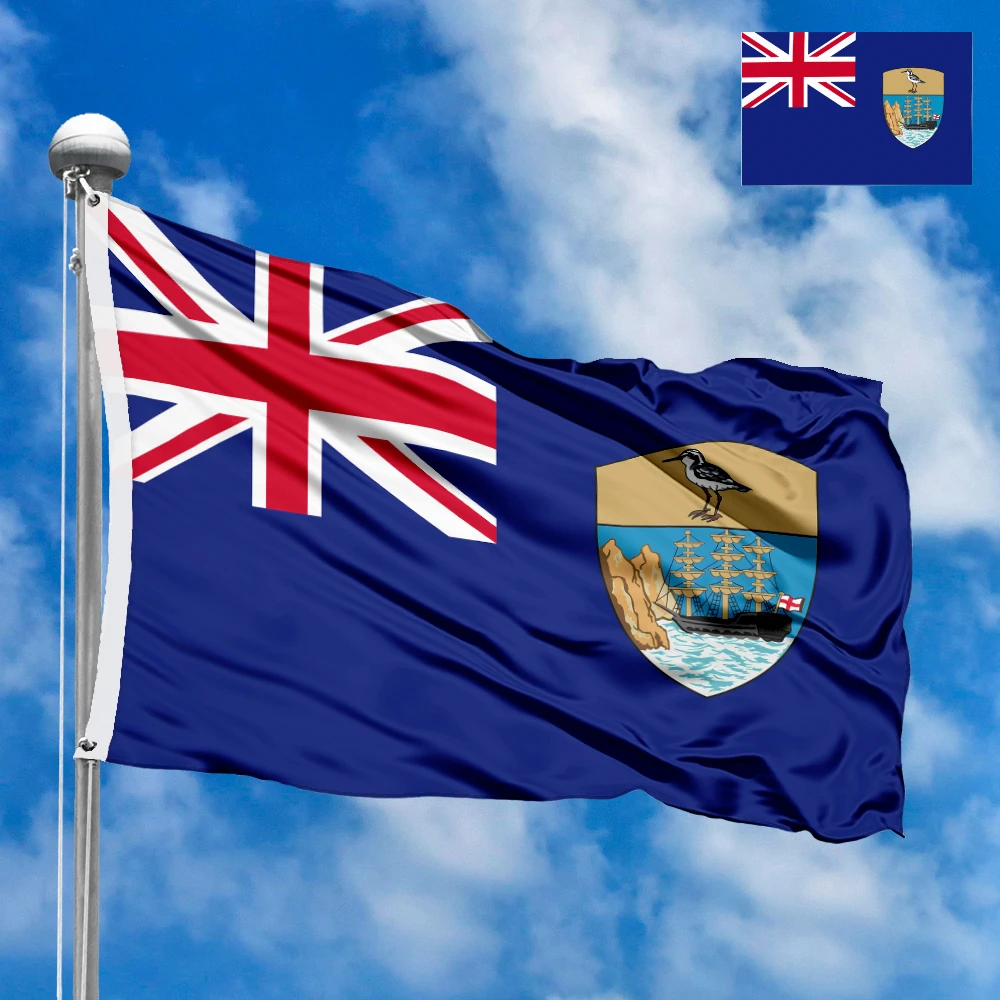
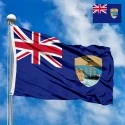



 Sizes:
Sizes:
 Sizes:
Sizes:
